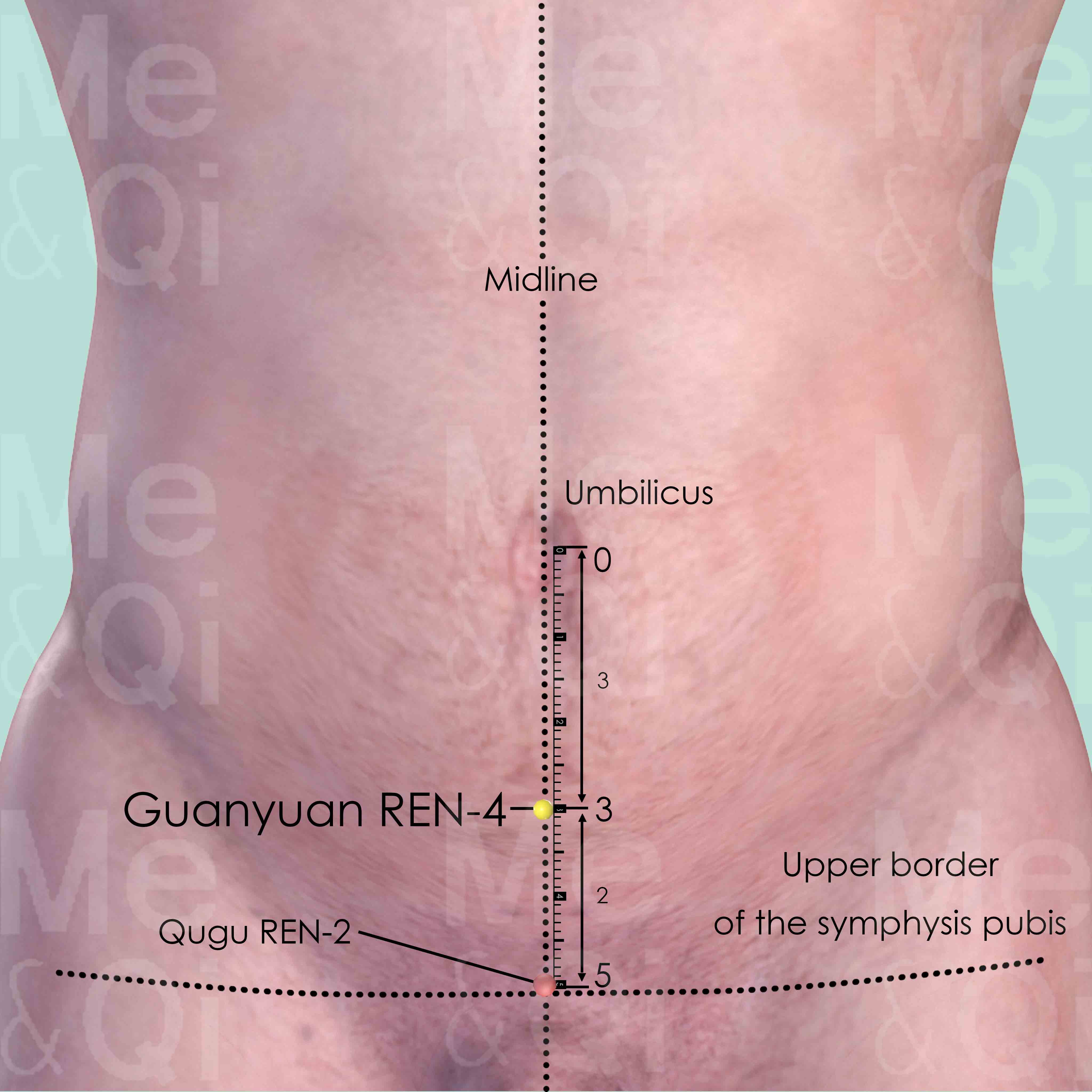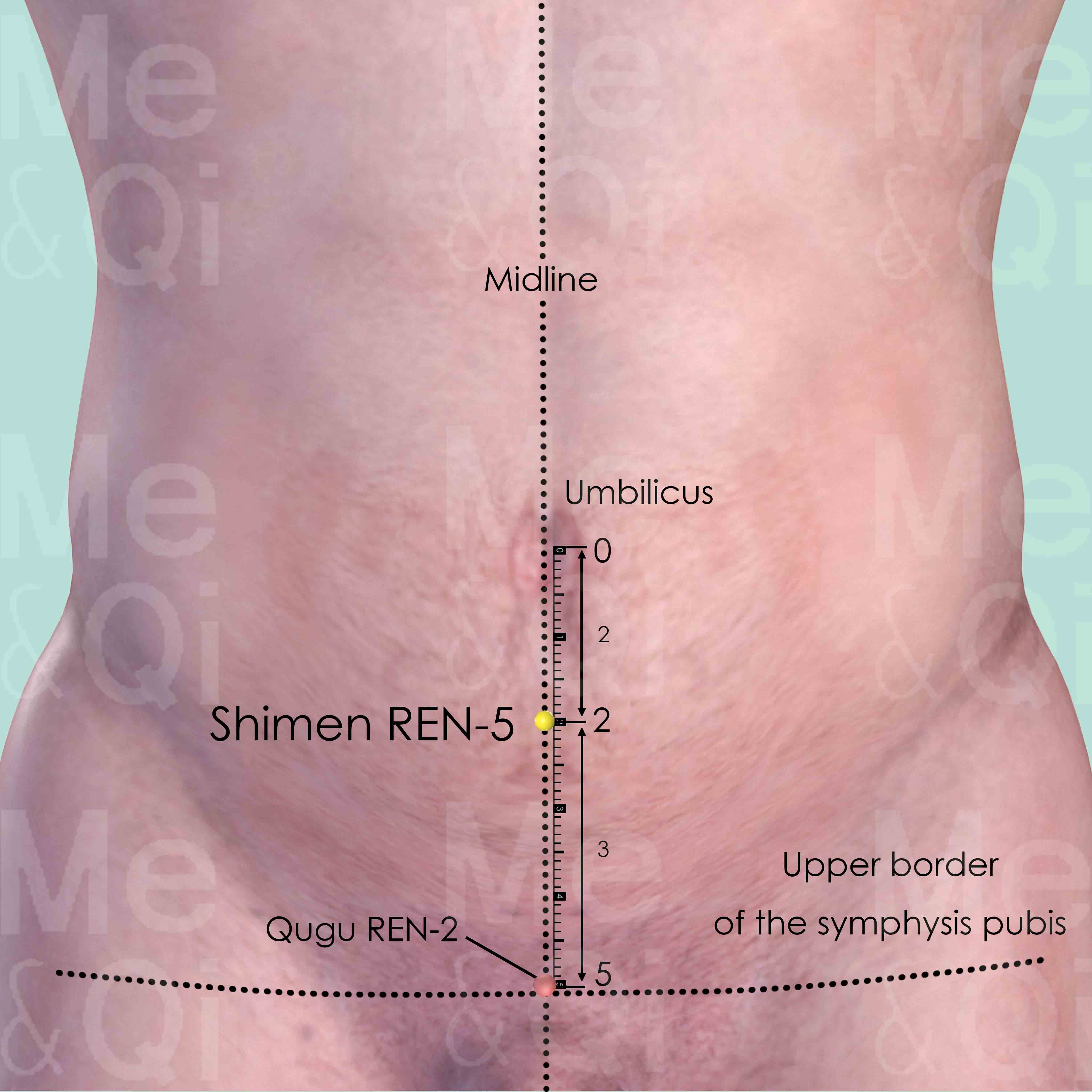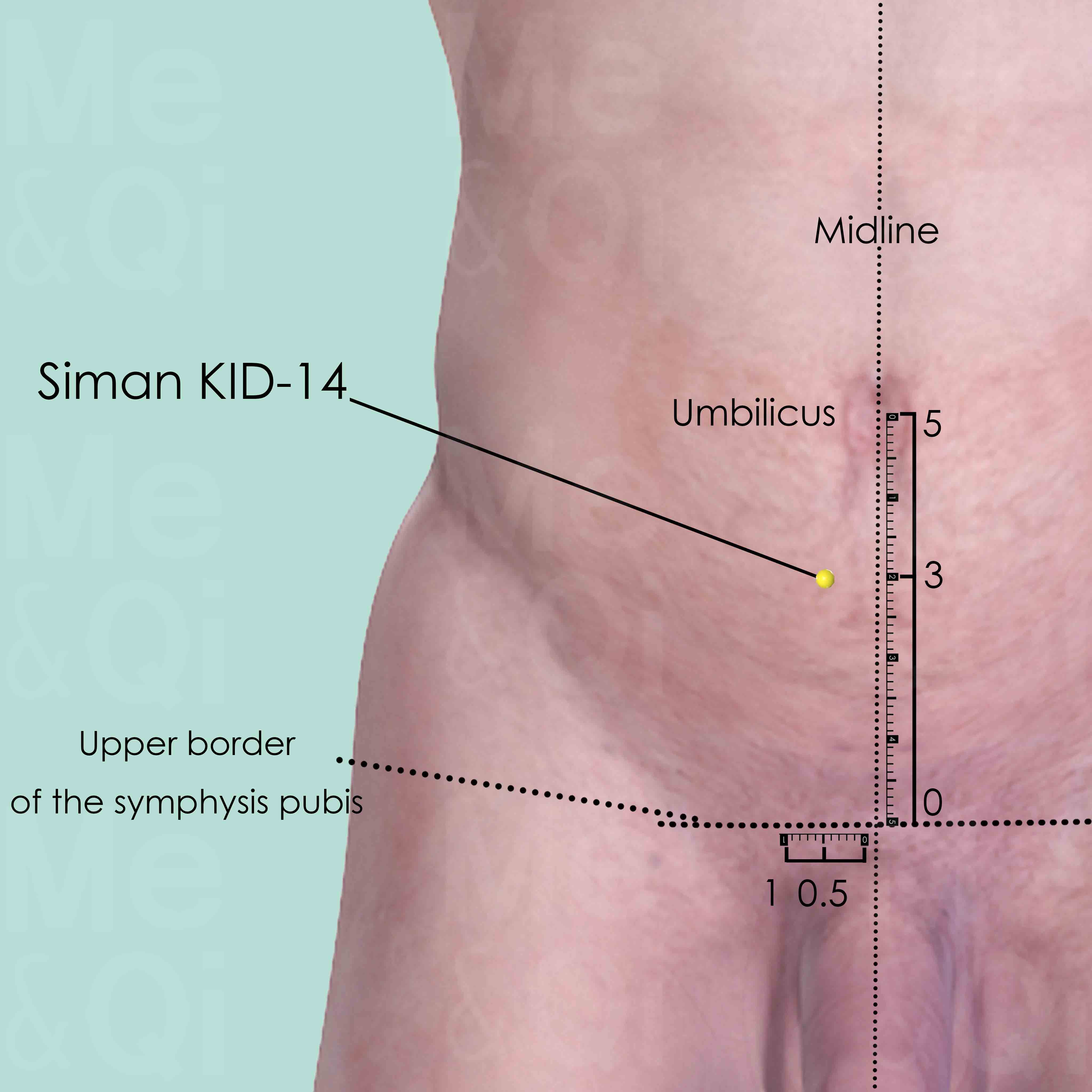Prolonged Lochiaaccording to TCM
Symptom family: Postpartum issues
Did you mean? Postpartum Hemorrhage
What is Prolonged Lochia?
Prolonged lochia refers to the condition where postpartum bleeding and discharge, known as lochia, extends beyond the typical four to six-week period following childbirth. This condition encompasses a range of manifestations, including ongoing lochia, excessive postpartum discharge, and lochia retention. Understanding and identifying prolonged lochia is essential for ensuring postpartum health and well-being.
How Does TCM View Prolonged Lochia?
Traditional Chinese Medicine perceives prolonged lochia as a manifestation of imbalance in the bodys vital energies after childbirth. It underscores the importance of restoring harmony following the significant physiological changes experienced during delivery.
In TCM, the resolution of prolonged lochia involves identifying and correcting underlying disharmonies, which may involve imbalances in Qi (vital energy), blood, or other fundamental bodily elements.
Root Causes of Prolonged Lochia in TCM
In TCM, two primary pattern categories are often associated with prolonged lochia. The first is Blood Stagnation, where there is Stagnation of Blood in the Uterus, leading to continuous bleeding. This condition is typically marked by dark, clotted discharge and lower abdominal pain. TCM treatments in such cases aim to enhance blood circulation and eliminate stasis.
The second category of pattern, Dampness and Phlegm in the Uterus, is characterized by an accumulation that obstructs the normal discharge of lochia, often presenting with symptoms like a sensation of heaviness and bloating. TCM focuses on resolving dampness and phlegm to aid recovery.
Explore below more details about what might cause Prolonged lochia according to TCM.
Blood Stasis
Blood Stasis in TCM is a concept where the blood flow in the body is not as smooth or efficient as it should be. Imagine a river that's supposed to flow freely, but instead, it's getting blocked or moving too slowly in some parts. This can lead to various health issues, like pain that feels sharp or stabbing, dark bruises, and a complexion that looks purplish. TCM believes that good health relies on the smooth and vibrant flow of Qi and blood throughout the body, so when blood gets stuck, it's like a traffic jam in your body, leading to discomfort or health problems.... see more
Blood Stasis Patterns That Can Lead to Prolonged Lochia
Common Symptoms: Menstrual Cramps Irregular Periods Amenorrhea Abdominal Pain Infertility Postpartum Hemorrhage Retained Placenta Cervical Erosion
| Pattern Name | Relevant Symptoms | Relevant Formulas |
|---|---|---|
| Qi And Blood Stagnation | Lochia retention, Chest distension, Chest pain, Stabbing fixed pain, Dark face, Purple lips, Purple nails, Irritability, Mood swings, Depression, Mottled skin, Foot edema, Abdominal masses, Melena black tarry stool, Menstrual cramps, Amenorrhea, Dark menstrual clots, Dark menstrual blood, Prolonged lochia, Irregular periods... see more | Shi Xiao San | Xue Fu Zhu Yu Tang | Shen Tong Zhu Yu Tang | Shao Fu Zhu Yu Tang | Ge Xia Zhu Yu Tang | Chai Hu Shu Gan San | Qi Li San | Dan Shen Yin | Guo Qi Yin |
| Blood Stagnation and Phlegm in the Uterus | Lochia retention, Persistent uterine bleeding of purple or dark blood, Lower abdominal distension and pain that increases with pressure, Lower abdominal fibroids and cysts, Menstrual cramps, Irregular periods, Abdominal pain, Prolonged lochia, Infertility, Postpartum hemorrhage, Retained placenta... see more | Gui Zhi Fu Ling Wan |
| Blood Stagnation in the Directing and Penetrating Vessels | Lochia retention, Irregular periods, Brown vaginal discharge, Dark menstrual clots, Menstrual cramps, Dark menstrual blood, Prolonged lochia, Lower abdominal pain, Umbilical pain, Breast engorgement, Breast pain... see more | Gui Zhi Fu Ling Wan |
Phlegm
In TCM "Phlegm" as a pattern of disharmony is a complex concept that extends beyond the physical manifestation of mucus. It represents a pathological factor that can disrupt the flow of Qi (vital energy) and blood, leading to various health issues. Phlegm in TCM is seen as a sticky, turbid substance arising from the body's inability to metabolize fluids properly, often due to a dysfunction of the spleen. It's not only associated with respiratory problems like cough and congestion but also with systemic issues. Symptoms can include a feeling of heaviness, mental cloudiness, dizziness, and in some cases, the formation of lumps or masses. Phlegm can even be "invisible," contributing to emotional disturbances like depression or stress. ... see more
Phlegm Patterns That Can Lead to Prolonged Lochia
| Pattern Name | Relevant Symptoms | Relevant Formulas |
|---|---|---|
| Blood Stagnation and Phlegm in the Uterus | Lochia retention, Persistent uterine bleeding of purple or dark blood, Lower abdominal distension and pain that increases with pressure, Lower abdominal fibroids and cysts, Menstrual cramps, Irregular periods, Abdominal pain, Prolonged lochia, Infertility, Postpartum hemorrhage, Retained placenta... see more | Gui Zhi Fu Ling Wan |
Qi Stagnation
Qi Stagnation in TCM is like having a traffic jam in your body's energy system. Qi, the vital life force that flows through your body, is supposed to move smoothly to maintain health and balance. But with Qi Stagnation, this flow gets blocked or slowed down, like cars stuck on a highway. This can lead to symptoms like feeling stressed, emotional mood swings, and physical discomfort, often described as a feeling of fullness or tightness, especially in the chest or abdomen. It's as though the body's internal energy circulation is disrupted, causing various issues. TCM sees this as an energy flow problem, different from modern medicine's focus on specific physiological processes.... see more
Qi Stagnation Patterns That Can Lead to Prolonged Lochia
| Pattern Name | Relevant Symptoms | Relevant Formulas |
|---|---|---|
| Qi And Blood Stagnation | Lochia retention, Chest distension, Chest pain, Stabbing fixed pain, Dark face, Purple lips, Purple nails, Irritability, Mood swings, Depression, Mottled skin, Foot edema, Abdominal masses, Melena black tarry stool, Menstrual cramps, Amenorrhea, Dark menstrual clots, Dark menstrual blood, Prolonged lochia, Irregular periods... see more | Shi Xiao San | Xue Fu Zhu Yu Tang | Shen Tong Zhu Yu Tang | Shao Fu Zhu Yu Tang | Ge Xia Zhu Yu Tang | Chai Hu Shu Gan San | Qi Li San | Dan Shen Yin | Guo Qi Yin |
Uterus
In TCM the Uterus (or "Bao Gong") is not just a reproductive organ but a vital system closely linked to Kidney energy, responsible for menstrual health, fertility, and pregnancy. It's also connected to the Heart and Liver, reflecting the importance of emotional and blood health in reproductive wellness. In TCM, the Uterus is seen as a reservoir of Blood and Qi, crucial for reproductive health and general vitality. When the Uterus malfunctions or is imbalanced, it can lead to menstrual irregularities, infertility, miscarriages, or menopausal symptoms. Additionally, there might be symptoms like lower abdominal pain or emotional disturbances such as mood swings, often linked to Liver Qi stagnation. These manifestations highlight the TCM perspective that the health of the Uterus is intertwined with the overall balance of energy and blood in the body, as well as emotional well-being.... see more
Uterus Patterns That Can Lead to Prolonged Lochia
| Pattern Name | Relevant Symptoms | Relevant Formulas |
|---|---|---|
| Blood Stagnation and Phlegm in the Uterus | Lochia retention, Persistent uterine bleeding of purple or dark blood, Lower abdominal distension and pain that increases with pressure, Lower abdominal fibroids and cysts, Menstrual cramps, Irregular periods, Abdominal pain, Prolonged lochia, Infertility, Postpartum hemorrhage, Retained placenta... see more | Gui Zhi Fu Ling Wan |
TCM Herbal Formulas for Prolonged Lochia
TCM employs specific herbal formulas to address the underlying patterns of prolonged lochia. For Blood Stasis, formulas such as Shi Xiao San and Gui Zhi Fu Ling Wan are commonly prescribed. These include herbs like Cattail pollen and Cinnamon twigs, known for their blood-invigorating properties.
In cases of Dampness and Phlegm in the Uterus, Wen Jing Tang is often recommended, which contains ingredients such as Cinnamon twigs to warm the channels and disperse cold, tackling the root cause.
Explore below some TCM herbal formulas used to address prolonged lochia, organized by cause and by formula type.
- By Cause
- By Formula Type
- Blood Stasis
- Phlegm
- Qi Stagnation
- View More Causes
- Formulas that invigorate blood and dispel blood stagnation
- Formulas that regulate blood
- Formulas that promote qi movement
- Formulas that tonify blood
Top Formula for Blood Stasis:
Gui Zhi Fu Ling Wan
Suitable for Blood Stasis patterns that may cause prolonged lochia, such as Blood Stagnation and Phlegm in the Uterus or Blood Stagnation in the Directing and Penetrating Vessels
Learn moreAll Formulas Recommended for Prolonged Lochia Caused by Blood Stasis
| Formula | Patterns Suitable For |
|---|---|
| Gui Zhi Fu Ling Wan | Blood Stagnation and Phlegm in the Uterus, Blood Stagnation in the Directing and Penetrating Vessels... see more |
| Shi Xiao San | Qi And Blood Stagnation |
| Xue Fu Zhu Yu Tang | Qi And Blood Stagnation |
| Shen Tong Zhu Yu Tang | Qi And Blood Stagnation |
| Shao Fu Zhu Yu Tang | Qi And Blood Stagnation |
| Ge Xia Zhu Yu Tang | Qi And Blood Stagnation |
| Chai Hu Shu Gan San | Qi And Blood Stagnation |
| Qi Li San | Qi And Blood Stagnation |
| Dan Shen Yin | Qi And Blood Stagnation |
| Guo Qi Yin | Qi And Blood Stagnation |
Top Formula for Phlegm:
Gui Zhi Fu Ling Wan
Suitable for Phlegm patterns that may cause prolonged lochia, such as Blood Stagnation and Phlegm in the Uterus
Learn moreTop Formula for Qi Stagnation:
Shi Xiao San
Suitable for Qi Stagnation patterns that may cause prolonged lochia, such as Qi And Blood Stagnation
Learn moreAll Formulas Recommended for Prolonged Lochia Caused by Qi Stagnation
| Formula | Patterns Suitable For |
|---|---|
| Shi Xiao San | Qi And Blood Stagnation |
| Xue Fu Zhu Yu Tang | Qi And Blood Stagnation |
| Shen Tong Zhu Yu Tang | Qi And Blood Stagnation |
| Shao Fu Zhu Yu Tang | Qi And Blood Stagnation |
| Ge Xia Zhu Yu Tang | Qi And Blood Stagnation |
| Chai Hu Shu Gan San | Qi And Blood Stagnation |
| Qi Li San | Qi And Blood Stagnation |
| Dan Shen Yin | Qi And Blood Stagnation |
| Guo Qi Yin | Qi And Blood Stagnation |
Formulas that invigorate Blood and dispel Blood Stagnation
These formulas are suitable for some prolonged lochia-causing patterns like Blood Stagnation and Phlegm in the Uterus or Blood Stagnation in the Directing and Penetrating Vessels.
One such formula is Gui Zhi Fu Ling Wan, with cinnamon twigs as a key herb.
Other formulas of this category are listed in the table below.
All "formulas that invigorate blood and dispel blood stagnation" recommended for prolonged lochia
| Formula | Patterns Suitable For (if applicable) |
|---|---|
| Gui Zhi Fu Ling Wan | Blood Stagnation and Phlegm in the Uterus, Blood Stagnation in the Directing and Penetrating Vessels... see more |
| Shi Xiao San | Qi And Blood Stagnation |
| Xue Fu Zhu Yu Tang | Qi And Blood Stagnation |
| Shao Fu Zhu Yu Tang | Qi And Blood Stagnation |
| Ge Xia Zhu Yu Tang | Qi And Blood Stagnation |
| Qi Li San | Qi And Blood Stagnation |
| Dan Shen Yin | Qi And Blood Stagnation |
| Wen Jing Tang | Dampness and Phlegm in the Uterus |
| Tao He Cheng Qi Tang | Not applicable |
Formulas that regulate Blood
These formulas are suitable for some prolonged lochia-causing patterns like Qi And Blood Stagnation.
One such formula is Shen Tong Zhu Yu Tang, with peach kernel as a key herb.
Formulas that promote Qi movement
These formulas are suitable for some prolonged lochia-causing patterns like Qi And Blood Stagnation.
One such formula is Chai Hu Shu Gan San, with bupleurum root as a key herb.
Formulas that tonify Blood
These formulas are suitable for some prolonged lochia-causing patterns like Qi And Blood Stagnation.
One such formula is Guo Qi Yin, with dong quai as a key herb.
Acupoints for Prolonged Lochia
Acupuncture is another crucial aspect of TCM, involving stimulation of specific points to restore bodily balance. For prolonged lochia, acupoints in the Directing Vessel like Guanyuan REN-4, Shimen REN-5, and Zhongji REN-3 are emphasized for their ability to nourish blood and yin, strengthen the uterus, and benefit bladder function.
Additionally, points on the Spleen Channel, such as Gongsun SP-4 and Sanyinjiao SP-6, are used for harmonizing the spleen and stomach, regulating menstruation, and calming the mind. Points on the Pericardium and Lung Channels, including Jianshi P-5 and Lieque LU-7, are also employed for their roles in opening the minds orifices, calming the mind, and regulating Qi flow.
Explore below some acupoints used to address prolonged lochia, organized by meridian.
- By Meridian
- Directing Vessel
- Spleen Channel
- Extra Points: Lower Extremities (EX-LE)
- Pericardium Channel
- Lung Channel
- Extra Points: Chest and Abdomen (EX-CA)
- Kidney Channel
- Liver Channel
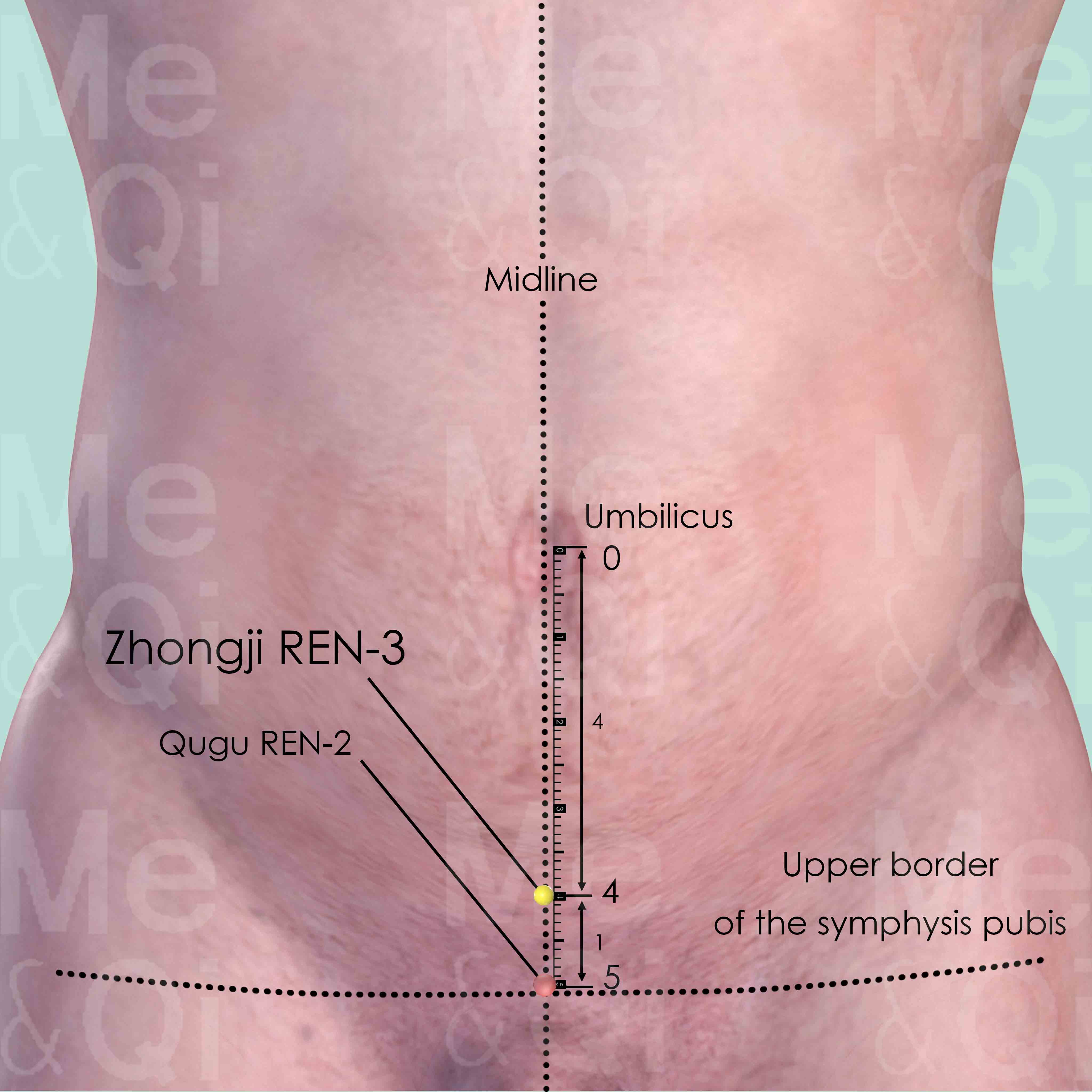
Zhongji REN-3
On the anterior midline, 4 cun below the umbilicus, 1 cun above Qugu REN-2, which is located at the upper border of the symphysis pubis.
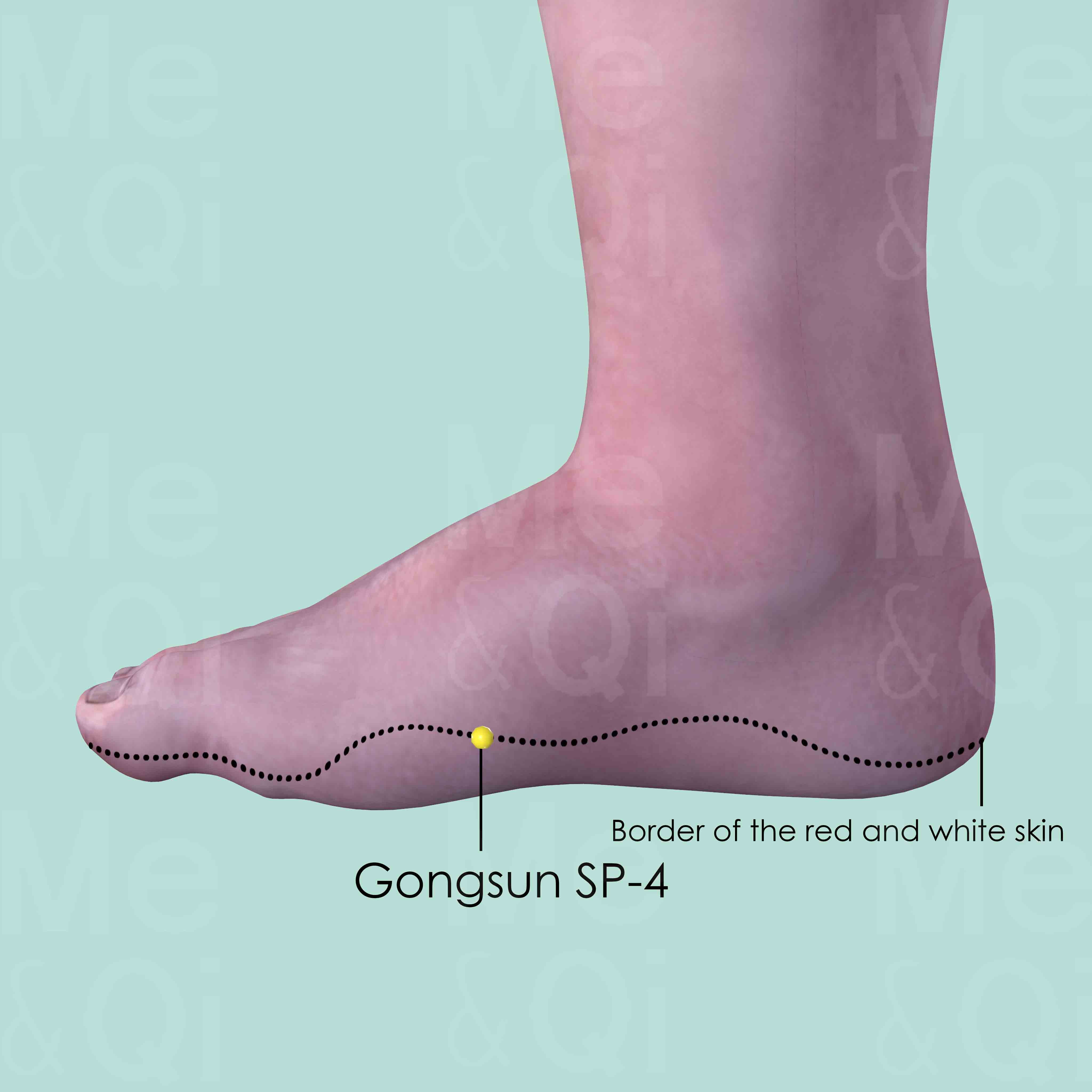
Gongsun SP-4
In the depression distal and inferior to the base of the 1st metatarsal bone, at the border of the red and white skin.
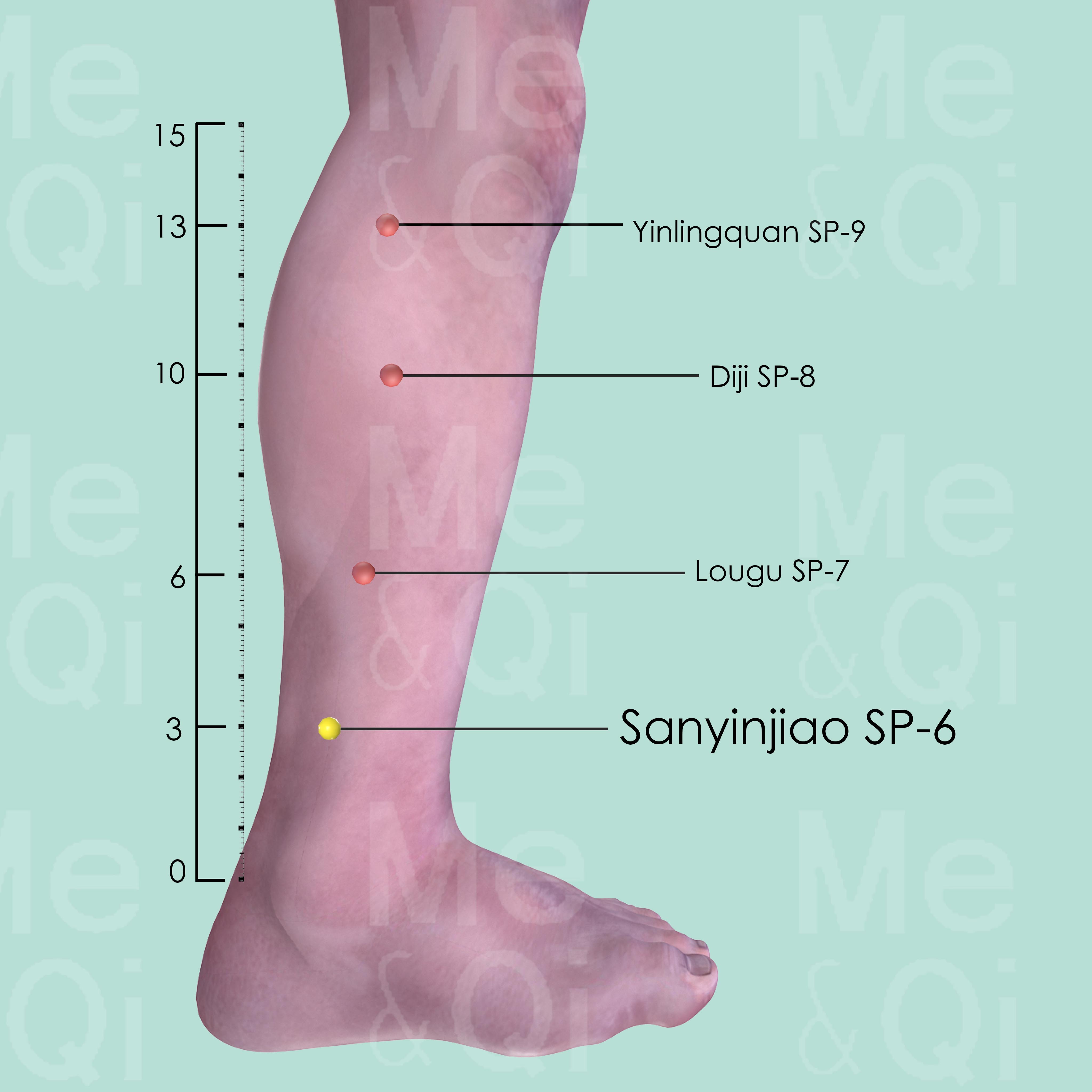
Sanyinjiao SP-6
3 cun directly above the tip of the medial malleolus, on the posterior border of the tibia, on the line drawn from the medial malleolus to Yinlingquan SP-9.
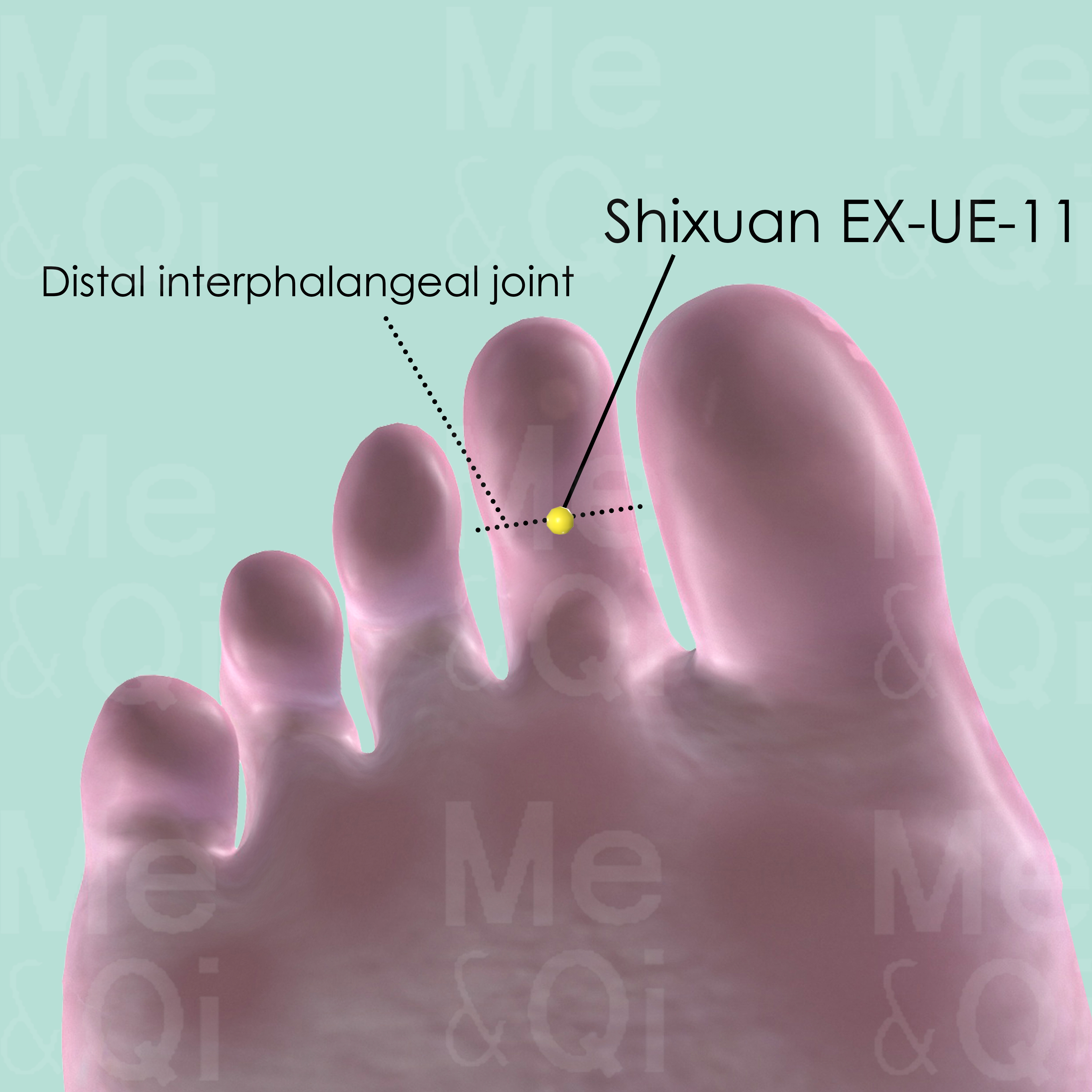
Duyin EX-LE-11
On the plantar aspect of the 2nd toe, at the midpoint of the transverse crease of the distal interphalangeal joint.
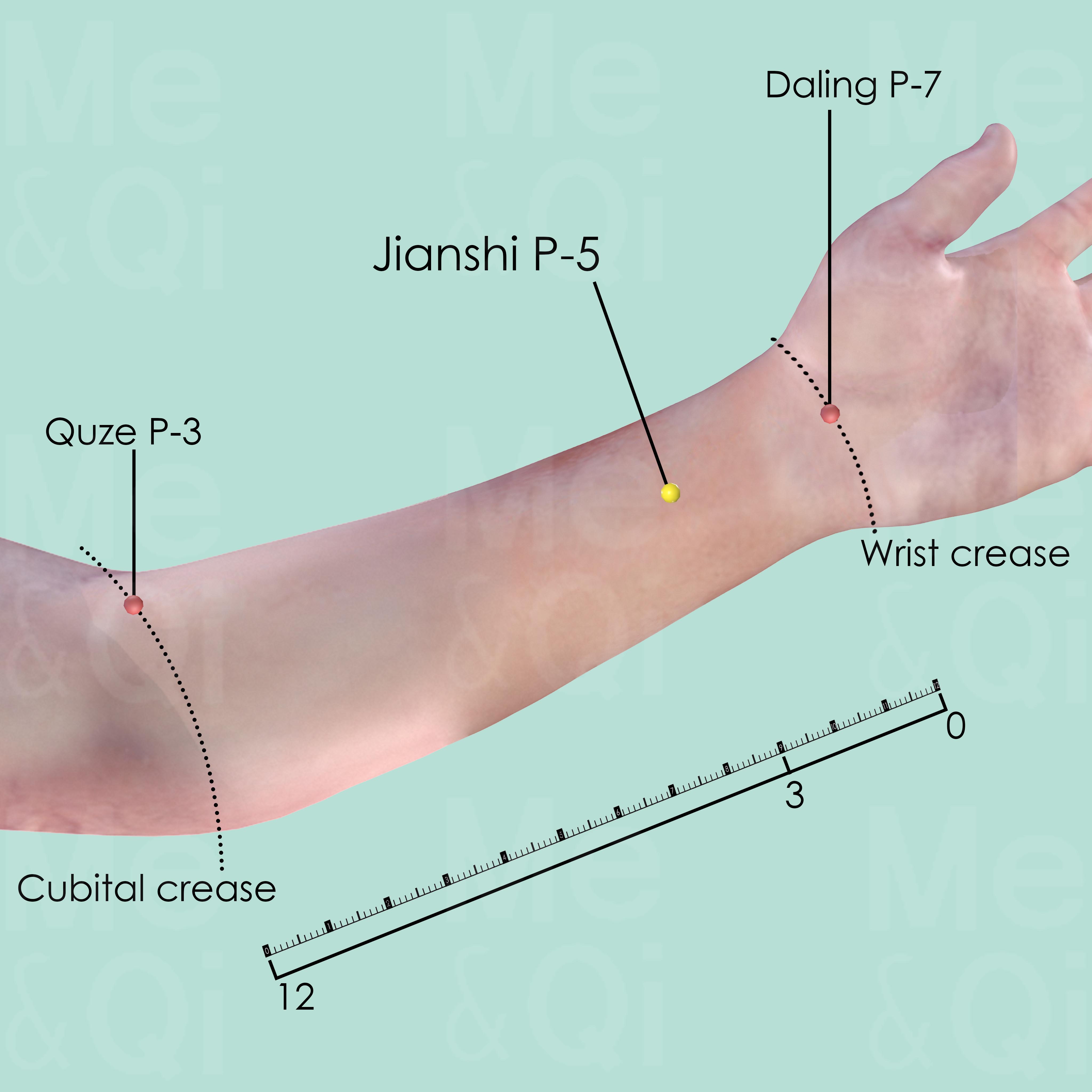
Jianshi P-5
3 cun above the transverse crease of the wrist, between the tendons of palmaris longus and flexor carpi radialis muscle.
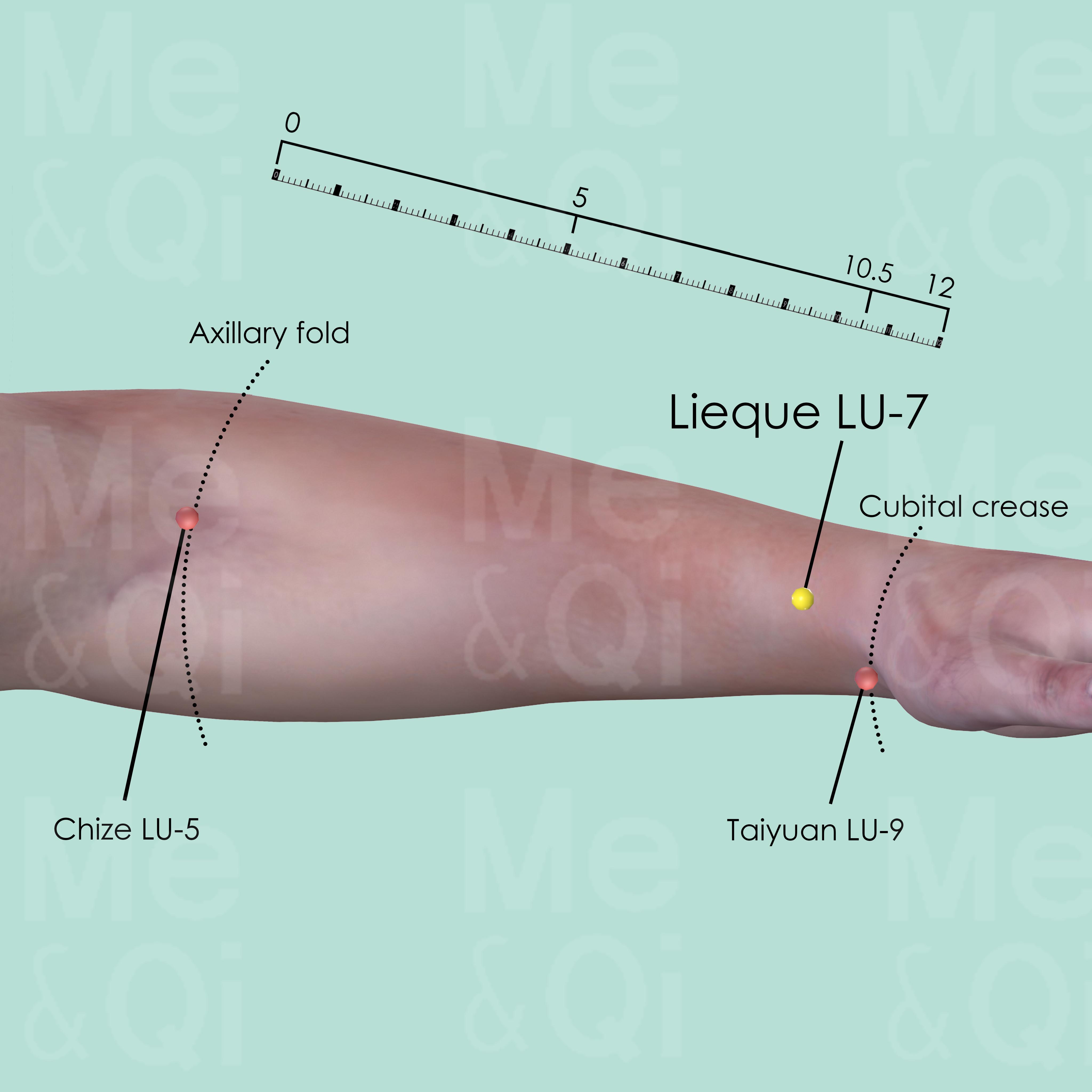
Lieque LU-7
Above the styloid process of the radius, about 1.5 cun proximal to the wrist crease (wrist joint space) in a V-shaped depression.
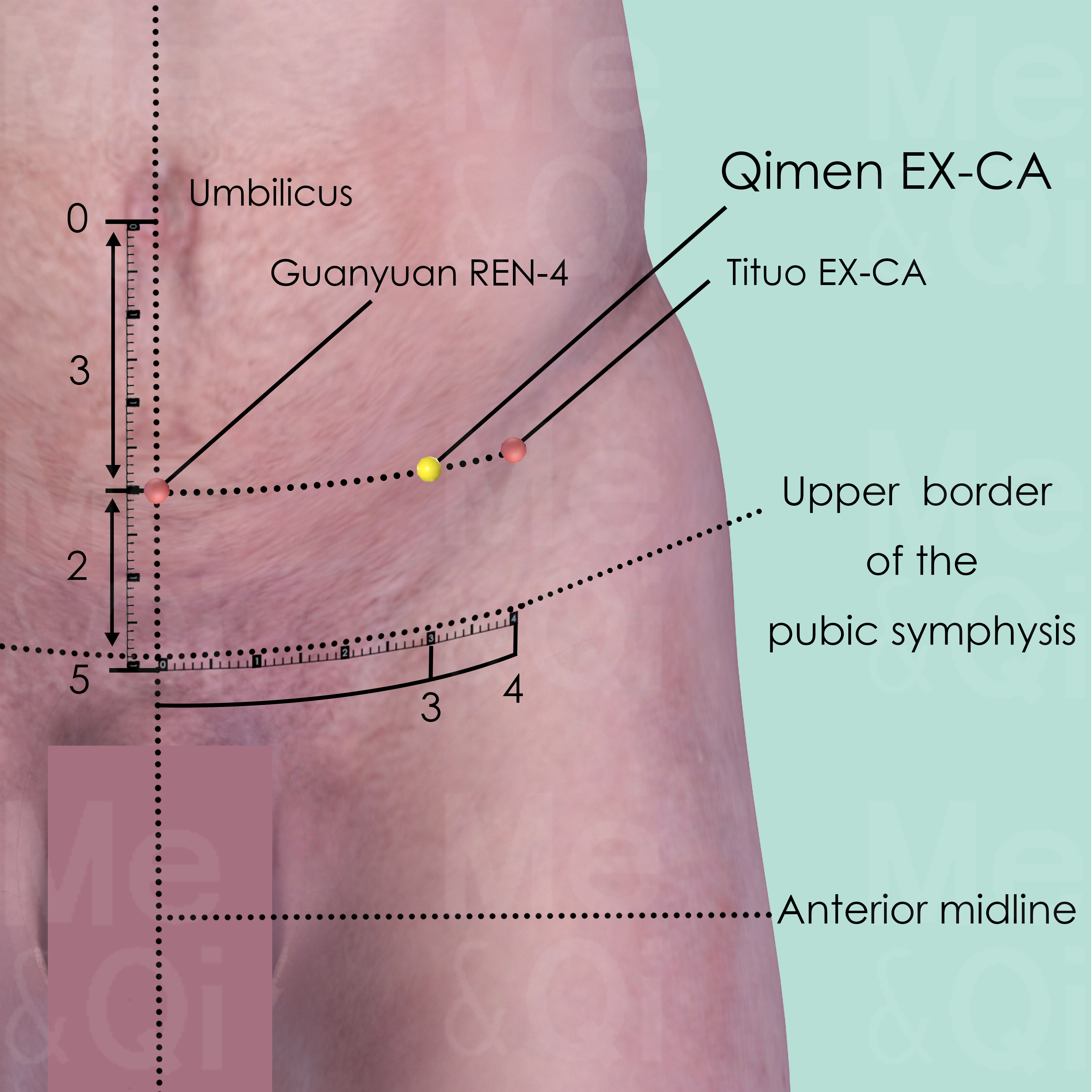
Qimen EX-CA
3 cun lateral to the anterior midline and 2 cun superior to the upper border of the pubic symphysis.
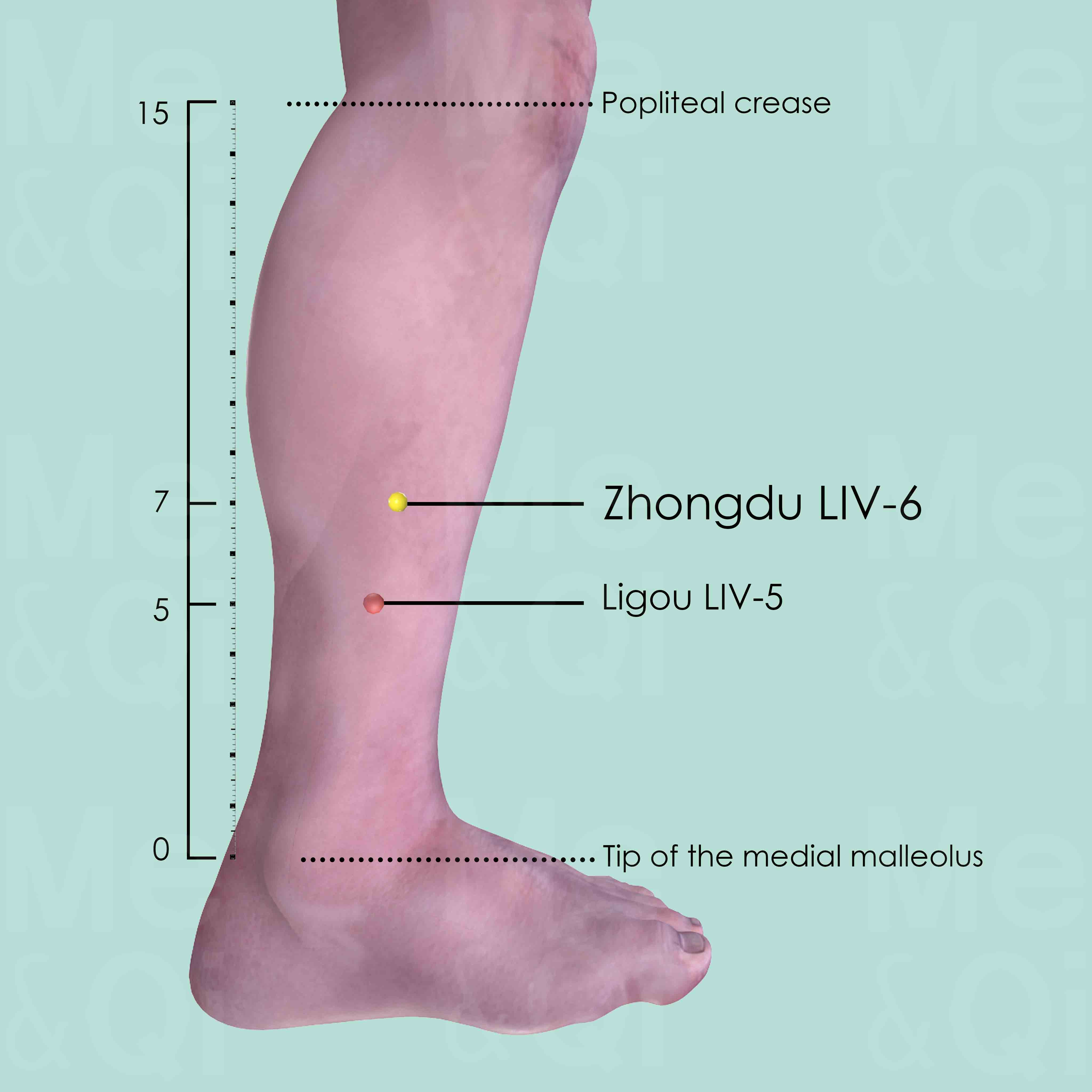
Zhongdu LIV-6
7 cun above the tip of the medial malleolus, or 2 cun above Ligou LIV-5, on the medial aspect and posterior to the medial crest of the tibia.

